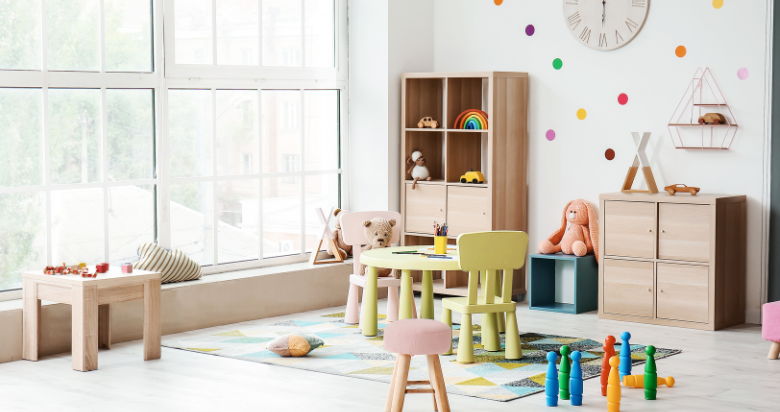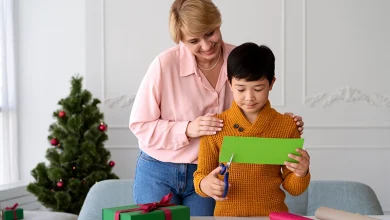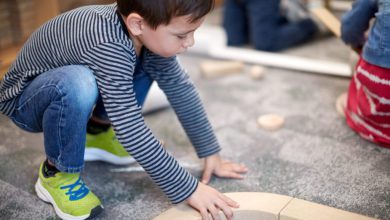Inspiring Playroom Ideas: Creating a Reggio Emilia-Inspired Space for Your Child

Inspiring Playroom Ideas: Creating a Reggio Emilia-Inspired Space for Your Child
Creating a playroom is more than just setting up a place for toys. It’s about designing an environment where your child can explore, learn, and grow. At Little Sunshine’s Playhouse & Preschool, we draw on the Reggio Emilia Approach to create inviting, interactive spaces that support children’s natural curiosity. Here, we’ll share some inspiring playroom ideas based on this approach, along with tips to nurture your child’s development in a playful, creative way.
What is the Reggio Emilia Approach?
Developed in Italy, the Reggio Emilia approach is rooted in the idea that children are capable, curious, and driven by their interests. In this approach, the environment itself is seen as a “third teacher,” providing children with tools and spaces to explore their world. Little Sunshine’s Playhouse incorporates this philosophy by creating spaces that encourage self-guided learning, collaboration, and creativity. Let’s look at how you can use this philosophy for playroom ideas for your own home.
Start with Neutral Colors and Natural Light
- Reggio Emilia-inspired spaces emphasize calm, neutral tones and a strong connection to nature. Light walls, natural wood finishes, and large windows create an inviting space.
- At Little Sunshine’s Playhouse, we use natural materials to help children feel grounded and connected to their environment. When setting up your playroom, try to bring in natural light and avoid bright, distracting colors. You can take inspiration from our very own classrooms!
Incorporate Open-Ended Materials
- In Reggio Emilia environments, materials are versatile and open-ended, allowing children to use them in various ways. Think of items like wooden blocks, scarves, stones, and clay.
- Providing children with these materials encourages creativity. Rather than having a toy with a single use, open-ended materials let kids decide how to use them, sparking problem-solving and exploration.
Set Up Specific Activity Zones
- Reggio Emilia-inspired classrooms at Little Sunshine’s Playhouse have specific areas that support different kinds of play—like art corners, reading nooks, and sensory stations. In a home playroom, you might have areas for art, reading, pretend play, and building.
- When setting up zones, use low bookshelves or room dividers to help children navigate the space independently, choosing activities based on their interests.
Display Art at Child’s Eye Level
- Art isn’t just something children make—it’s something they experience. Displaying their work at their eye level inspires them to take pride in their creations and see themselves as artists.
- You could also display beautiful or intriguing images from nature or include framed photos of family members, adding a personal touch.
Create an Atelier (Art Studio) Space
- The “atelier,” or art studio, is a key component in a Reggio Emilia-inspired classroom. Here, children can express themselves through drawing, painting, and other creative activities.
- In your playroom, consider setting up an art station with child-sized easels, crayons, paper, paints, and other materials. Encourage free-form art time, as well as projects that let kids express their ideas visually.
Provide a Variety of Textures and Sensory Materials
- Sensory exploration is essential in early childhood development. At our schools, we incorporate sensory tables filled with different materials, from sand to water to natural objects.
- You can replicate this by having bins or trays with safe materials like sand, rice, or even dried pasta. Let children feel, pour, and manipulate these items, creating a space that encourages hands-on exploration.
Integrate Books and Storytelling Spaces
- Reading and storytelling are central in Reggio Emilia environments. Cozy reading nooks allow children to immerse themselves in stories, developing a love for literature.
- Use pillows, blankets, and child-sized seating to make a comfortable area where your child can read or listen to stories. We have found that utilizing storytelling spaces is the best way to inspire children’s imagination and empathy.
Bring Nature Inside
- Connecting with nature is vital in Reggio-inspired environments. In our classrooms, we like to include plants, natural objects, and outdoor time to deepen children’s connection to the environment.
- Bringing nature indoors could mean adding potted plants, a small indoor herb garden, or even a collection of rocks, leaves, or pinecones your child can explore and arrange.
Encourage Documentation and Reflection
- Documenting children’s work, whether through photos, written observations, or displays, provides opportunities for them to reflect on their learning journey.
- In a playroom, you could have a bulletin board where you display photos or drawings, or even a “reflection corner” with mirrors where children can see themselves and think about all the fun activities and items they’ve filled their day with. Little Sunshine’s uses this practice to help children see themselves as capable learners.
Promote Self-Directed Play
- Although it is beneficial to children for parents to involve themselves in play occasionally, the Reggio Emilia approach emphasizes independence and self-guided learning. It’s important to design spaces that encourage children to explore on their terms.
- Create a playroom that fosters independence by using accessible, child-height furniture and organizing materials so children can reach them easily. When children choose their activities, they’re more invested in their play. This also is a great way to inspire confidence in young children.
Add Elements of Surprise and Curiosity
- Reggio Emilia-inspired environments often have “provocations”—invitations to explore. These might be as simple as setting out a pile of stones with magnifying glasses or placing an interesting object for children to examine.
- In a playroom, you could add a new object each week or create small mystery bags for children to open. This helps spark their natural curiosity and keeps them engaged.
Use Loose Parts for Creativity and Critical Thinking
- “Loose parts” are materials children can move, combine, or alter, encouraging creativity. Examples include corks, fabric scraps, buttons, or shells.
- Provide a basket of safe loose parts and watch as your child uses them in surprising ways, fostering innovation and problem-solving skills.
Designing a Reggio Emilia-inspired playroom isn’t just about decorating; it’s about creating a place where your child feels free to explore and create. At Little Sunshine’s Playhouse, we see firsthand how this approach nurtures confident, curious learners who love to explore their world. We hope these ideas inspire playroom ideas for your home that embrace the beauty of child-directed play and the power of curiosity. By fostering an environment that encourages self-guided learning, you’re giving your child a strong foundation for a lifetime of creativity and discovery.
These articles are a great way to learn more about Reggio Emilia:
- https://littlesunshine.com/everything-there-is-to-know-about-the-reggio-emilia-approach-to-learning/
- https://littlesunshine.com/reggio-emilia-vs-montessori/
- https://littlesunshine.com/children-are-capable-principles-of-reggio-emilia/





